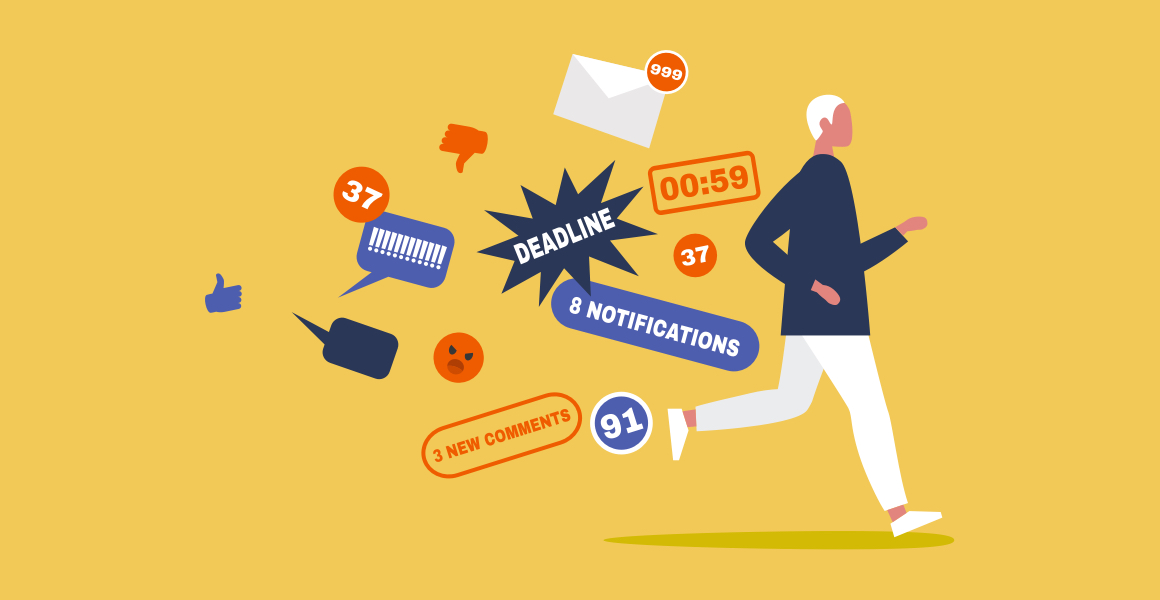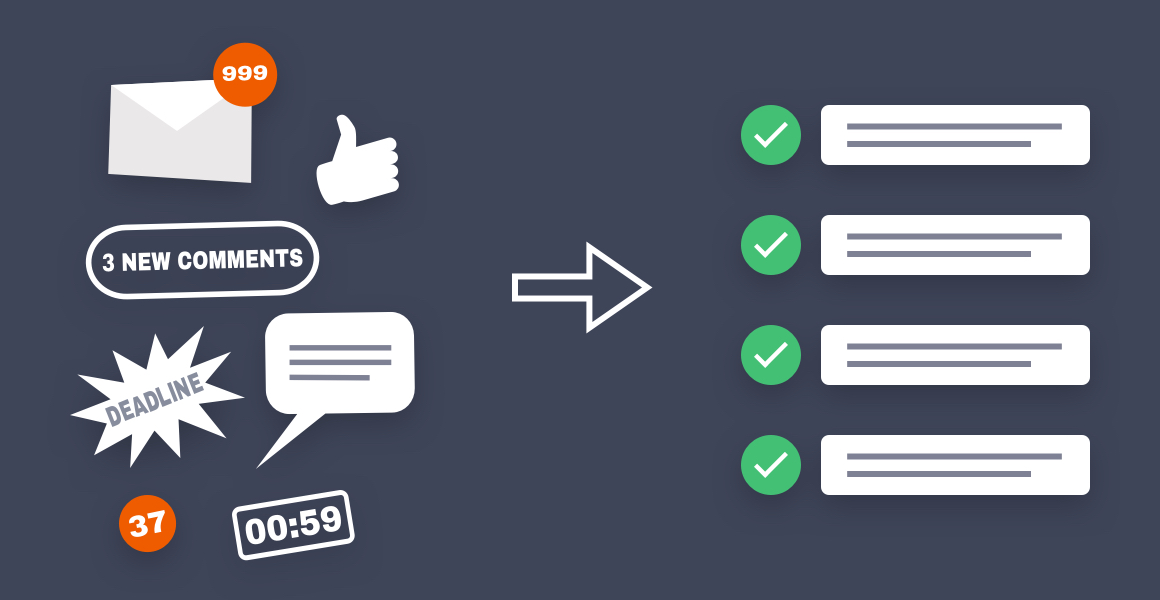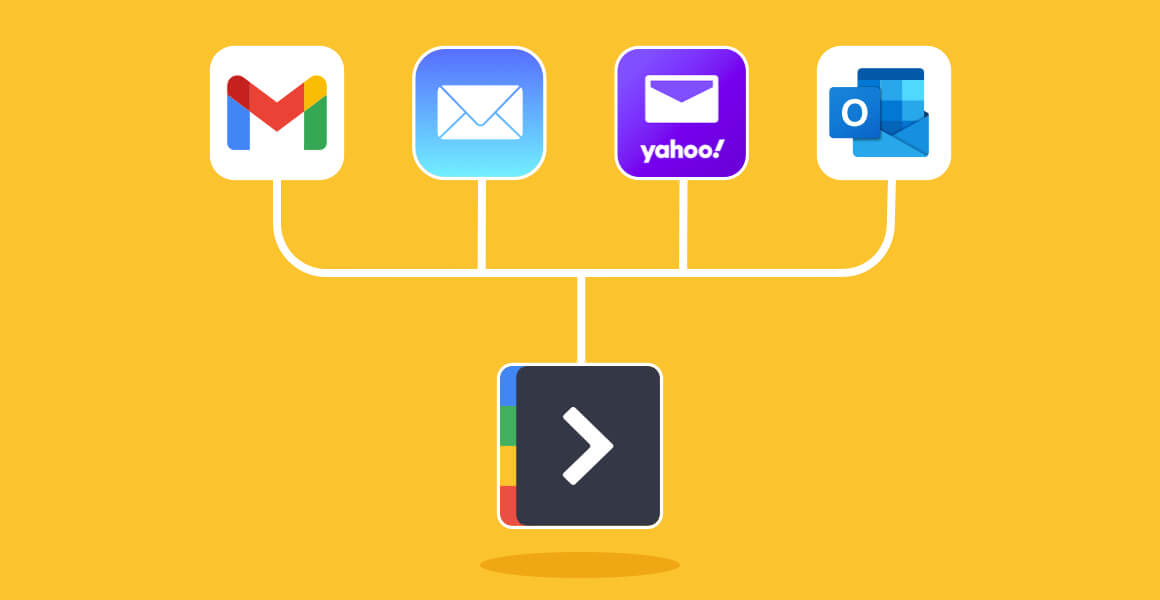How do you feel about email lately? We’ve heard a lot of chatter lately about email not working as well as it used to. The truth is, it’s not email that’s the problem, it’s email clients (or apps). Often it’s not the technology, it’s the implementation that’s the problem. Sometimes user error can even be to blame.
Modern technology makes so many things easier, but you have to be aware of its limitations. We are breaking down some research on modern email apps here. Keep reading to get our experts’ take on the issues with modern email apps.
Related Article: How to Organize Your Email Accounts
Is Email Still Relevant?
First, let’s take a look at the state of email overall. Not only is email still relevant, but the number of users grows every year. According to The HubSpot Blog's 2023 Marketing Strategy & Trends Report, a minimum of 90% (of four billion) daily email users check their email every single day. The audience for email is huge and ever-growing. Plus, email is still considered the most direct way of reaching someone. Most Americans as young as 12 who are active online participate in an email exchange every day. Marketers everywhere still rely on email, and for good reason. An article from the Forbes Communications Council states that the effectiveness of marketing through email will show no signs of slowing down in the years to come. Email continues to deliver massive ROI to brands and justify its premier place in the marketing mix.
However, that doesn’t mean it’s a perfect medium. Many people dislike email simply because they get too much of it. That’s not really the fault of the technology, though. Some people don’t like the attachments that they get, or that they get emails that should be a quick phone call or even a question via Slack. Again, these are perfectly fair stances to take, but it doesn’t mean that anything is wrong with the email platforms themselves. Aside from a general dislike that some people have for the role of email in their lives, what is going wrong with modern email clients?
The Issues with Email in General
As we mentioned above, it’s important to separate actual, functional issues with modern email apps from a general dislike of email. Email has become so entrenched in our daily lives, but not always to the best ends. In this New Yorker article, the author explains how “email is making us miserable”. The authors of the research involved found that email is stress-inducing and leads to quicker burnout, saying “The longer one spends on email in [a given] hour the higher is one’s stress for that hour.” Furthermore, test subjects also showed signs of physiological distress when checking email. Even batching email didn’t help everyone- people who scored highly in the trait of neuroticism felt even more stress by batching emails.
An awareness of what email does to both physical and mental health drove France to enact new labor laws designed to protect “the right to disconnect”. Any company with more than 50 employees was required to negotiate specific policies about the use of email following work hours, with the goal of reducing the time that employees spent in their inboxes during the evening or over the weekend. French labor leaders felt that this law was necessary for reducing both stress and burnout. Do they know something we don’t?
Either way, many of our feelings about email are tied up in the stress involved with being constantly “on”. These negative feelings are truly a symptom of a larger, more systemic problem. The truth is that email and the constant availability it provides have created a universal problem for most American workers.
Specific Issues with Email Apps
Some experts believe that in order to love email again, we need better email platforms. The technology behind email clients is one of the oldest and longest-running around. Email has certainly stood the test of time but not all of the technology associated has. Many email clients have been neglected, relegated to limited updates, or even corrupted.
Email clients are different from web browser instances where you can pull your cloud-based inbox up into a window. For the purposes of this article, we are talking about true email “clients” that download your mail from a mail server and let you read and respond from your desktop, either in a dedicated application or in an email reader that’s built into another application, such as a web browser. At one point stand-alone email clients offered the same advantages of their web counterparts. They were designed to be fast, graceful, and available offline. Years ago, there was a lot of research and development in this area. For example, the Opera web browser had a built-in email client, and Mozilla (the makers of Firefox) supported the stand-alone client Thunderbird. However, over the past decade or so, a serious shift to web-based email happened (led primarily by Gmail). Because of that, most browsers dropped their email clients, and the market was destroyed for some stand-alone email clients.
Some people always liked email clients better than web-based email, so a lack of innovation in that area is especially frustrating. For example, common complaints about Gmail are that it’s slow to load, sometimes awkward to use, and annoying to organize if you’re not excited about categories and labels. If you’re a person who felt that way, you probably rely on modern email apps. However, you may have a few issues with those too. Namely:
Text-only
Some email apps are text only and don’t include the formatting and layout options we have grown accustomed to. If you like your emails to have images, signatures, special fonts, etc. then some of today’s modern email apps (like Mutt, for example) will be frustrating. These platforms are the equivalent of an online postcard, delivering just the basic information you need to know (the copy) with none of the frills. However, if you like the frills, then you won’t enjoy this email app.
Too many notifications
Some people don’t want to be reminded of their constant availability. It’s important to limit distractions so it’s easy to dislike some of the modern email apps’ constant reminders and notifications. Though, you can often manage these in the settings of each platform, or use Shift to manage notifications. This is helpful for only checking email when you feel like it, not when the platform tells you to.
Related Article: How to Avoid Notification Overload
Lack of workflows
Almost all email interfaces are based around following a certain workflow. The problem is, it might not be the way you work. There is not as much customization available as you can find in other technology platforms. For example, many people don’t like the way that new emails appear as a default, and would welcome a better availability to create rules and have emails appear according to them.
Related Article: 15 Ways to Optimize Your Daily Workflow
Irrelevant emails sneaking through
Most modern email apps do a nice job of filtering out spam email, or at least collecting them in a separate folder. However, a lot of email that you receive is probably not considered spam, but more likely due to you being on a certain distribution list - and it can be difficult to manage your participation on these lists from apps. For example, you might be on threads for work that you don’t care about. Is it easy to remove yourself from that conversation? Many people using apps just accept that part as a nuisance and keep scrolling.
Search difficulty
How easy is it to perform custom searches on your chosen email application? Can you find a document that you sent to a particular person 2 years ago? On many platforms, the answer is no. It’s much easier in a web-based browser that stores all of your email in the cloud. Can you search for email based on keywords? This is another common request that can prove really difficult with the modern email apps. Generally speaking, file storage is really lacking on email apps and it can be more difficult than users would like to find things they previously sent via email.
Related Article: How to Search Across Multiple Email Accounts
Lack of forwarding options
Many apps require a few extra steps in order to forward an email. What if you just want to send the latest message, and not the entire thread? As of right now, most apps require you to go into the thread and delete what you don’t want to send yourself, which isn’t always easy on a mobile phone. Web clients tend to have more options for choosing how and what to forward.
Email priority
This is a feature that is great in concept, but difficult to execute. Email prioritization is difficult to accomplish and happens through AI and algorithms. Unless those algorithms are spot on and constantly improving, chances are your email isn’t going to be prioritized in the way that you would do it. Some people would rather email platforms didn’t bother with this functionality at all - just deliver the emails and let the user shuffle them accordingly. On the other hand, some users appreciate this feature. The problem is really when it’s the default with no ability to customize or impact the algorithms.
Use Shift to Streamline Email Efforts
Hopefully, the innovative minds that brought us email in the first place can keep making strides toward improving it. In the meantime, it would really be helpful if there was a better way altogether to streamline email messages and deal with them in the ways that are best for your working style. That’s where Shift comes in.
Shift offers notification management that can apply across all the apps you use every day, from Outlook to Facebook to Slack and beyond. With a couple of clicks, you can mute all notifications temporarily or control the sounds that play when a notification comes through. This means you won’t constantly be interrupted by new message notifications. The old principle “out of sight, out of mind” is often repeated for a reason: because not continuously getting reminders of email piling up will allow you to focus on the tasks at-hand.
Not only that, Shift brings together all of the notifications from any of your apps and email accounts and displays them in one place. You don’t have to look in multiple places anymore just to see what new alerts you have. Instead, you can simply check the number that appears in the little red bubble on the Shift icon in your taskbar, and there you go! This is truly the easiest way to avoid overload from email notifications. Users save a ton of time that previously was wasted by constantly checking their latest email notification and digging into their inboxes. Not only that, you can even turn off notifications or remove the notification badge for particular apps within Shift if you don’t want to be alerted to things within that particular platform. This is particularly helpful for drawing boundaries around your email work and only checking email on a proactive - rather than reactive - basis.
Furthermore, a platform like Shift will make sure you have all your apps in one place. As you go through the process of linking your favorite tools, you’ll see software and apps that you don’t use anymore. As you deactivate and delete those tools, you’ll lose any notifications that went with those services. It’s not only streamlining your entire desktop, but you’re deleting time-sinks in the process.
Related Article: How to Get an Email Aggregator App for Desktop
How Else Can Shift Help With Productivity?
Shift is a powerful tool for people who are trying to work more productively in their desktop environment. Anyone who uses online platforms will find Shift to be a valuable resource. With Shift, you can organize and manage the following:
- Mail - Connect all of your Gmail, Outlook, and Office 365 accounts and manage everything from one centralized workstation.
- Apps - WhatsApp, Slack, Messenger—we have everything you need to get it done. Browse our Apps Directory, connect yours, and switch between them easily.
- Search - Save time and find exactly what you're looking for across any of your Mail, Calendar, and Drive accounts.
- Chrome extensions - Enjoy access to Boomerang, Grammarly, LastPass, and many of your other favorite Chrome Extensions.
- Focused web tabs - Access the web from inside Shift. Manage your tabs and organize them by account for a better browsing experience.
- Workspaces - Create a Workspace with the exact apps, tabs, and bookmarks you need, then share it with your team to get the job done.
- Account management - Toggle between your most-used accounts, check notifications and streamline your workflow.
For more insights on productivity and getting organized, visit Shift’s Knowledge Base or sign up for our info-packed newsletter, “The Week Ahead”.




















 Share on Facebook
Share on Facebook Share on Twitter
Share on Twitter







